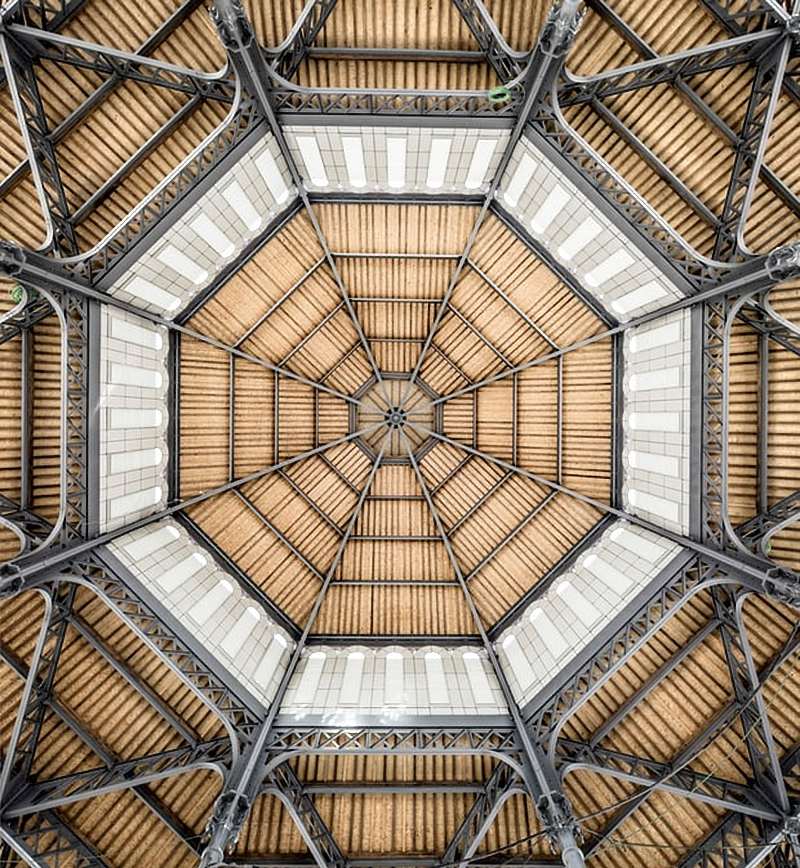Resources
Newsletter
Stay up to date and with the latest news, projects, deals and features.
SubscribeResidents in Barcelona celebrated the return of a 135-year-old market last week after a nine-year, €70 million (AUD$107 million) rejuvenation.
The Mercat de Sant Antoni, designed by Antoni Ravira in 1882, has been the central focus of an urban renewal project, helping restore and revitalise 39 of Barcelona's most visited marketplaces.
At 53,388 sq m Sant Antoni has stood as the largest market hall in Barcelona for the last century.
Barcelona City Council formed the Barcelona Institute of Municipal Markets during the 1992 Olympic Games to help completely renovate the city’s markets.
The public organisation has been responsible for promoting, managing and organising large-scale changes to Barcelona's vast network of marketplaces.
Related reading: Walkable London: Zaha Hadid Architects Proposes Pedestrianising London
The Barcelona Institute of Municipal Markets began the restorations at Sant Antoni in 2009 aiming to revitalise the ageing structure and in turn provide support for local commerce as an economic, urban and social driving force, as well as to safeguard existing jobs and create new ones.
Now complete, the market accommodates 235 establishments, of which 52 will be for fresh produce, 105 for clothes and 78 for the Sunday book market.
The new market’s renovation work involved constructing a new roof, made of glass-ceramic and polychrome tiles in the same vein as the original, a new rain-water collection system, new evacuation grids, extensive cleaning and consolidation of the metal beams and detailed restoration of the facades.
Architects also opted for renewable energy systems to reduce the markets environmental impact by harnessing geothermal energy to assist with the buildings air conditioning.

Related reading: New Timber ‘Vertical Village’ Planned for Paris
To assist vendors the market relocated to a temporary site while renovations were undertaken.
The extraordinary length of time for the work, spanning nine years, came down to the unexpected discovery of archaeological remains in the underground car park.
Part of the ancient city wall, as well as a stretch of the Roman Via Augusta (that runs for 1,500kms from the Pyrenees through seven Spanish cities to Cádiz) were discovered, inevitably causing delays after archaeologists and architects were forced to rethink the project.
As well as a new underground viewing zone for the archaeological discoveries, architects spent ample time redesigning the surrounding 26,000sq m of the market, opting for pedestrian zones with newly planted trees and children's play areas.
Agustí Colom, head of commerce on the city council and the man tasked with delivering Barcelona’s costly citywide market renovation plan underlined the importance of markets to the cities "barris", or neighbourhoods.
“The (Sant Antoni) market generates business, it’s a point of attraction but it’s also a social nexus,” Colom told The Guardian.
“Spending on markets is probably one of the investments with the biggest return, both economically and socially.”
“People don’t just shop, they talk and they feel part of a community. We run programs in markets for elderly people who feel isolated. Because they’re regular customers, there are people there who know them and to whom they can talk about their problems.”
One noteworthy addition is the inclusion of a popular supermarket within the refurbished market.
This decision made by the Institute of Municipal Markets aims to help recoup its investment through rent but also to attract new visitors and support local stallholders.




